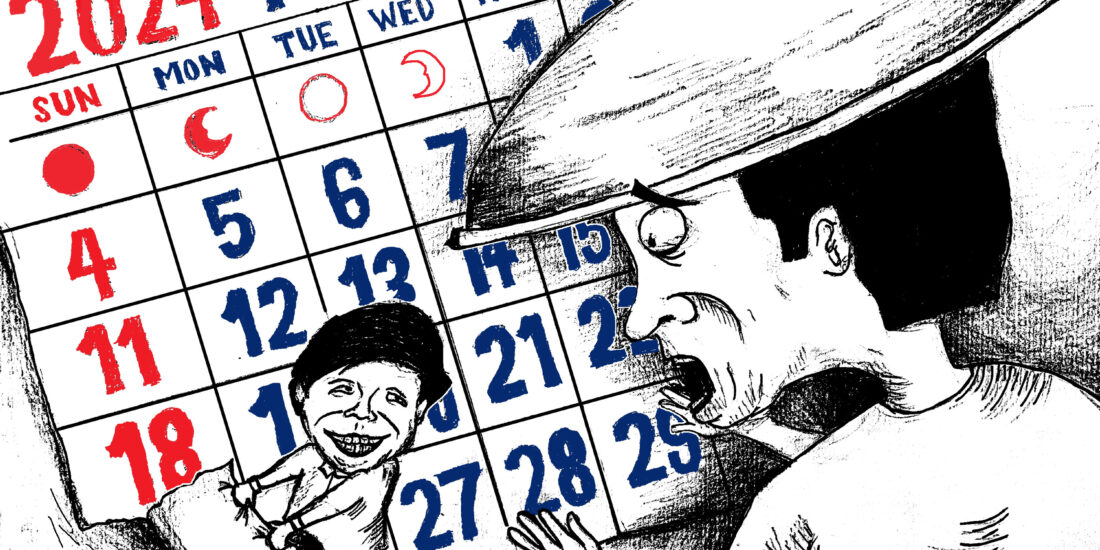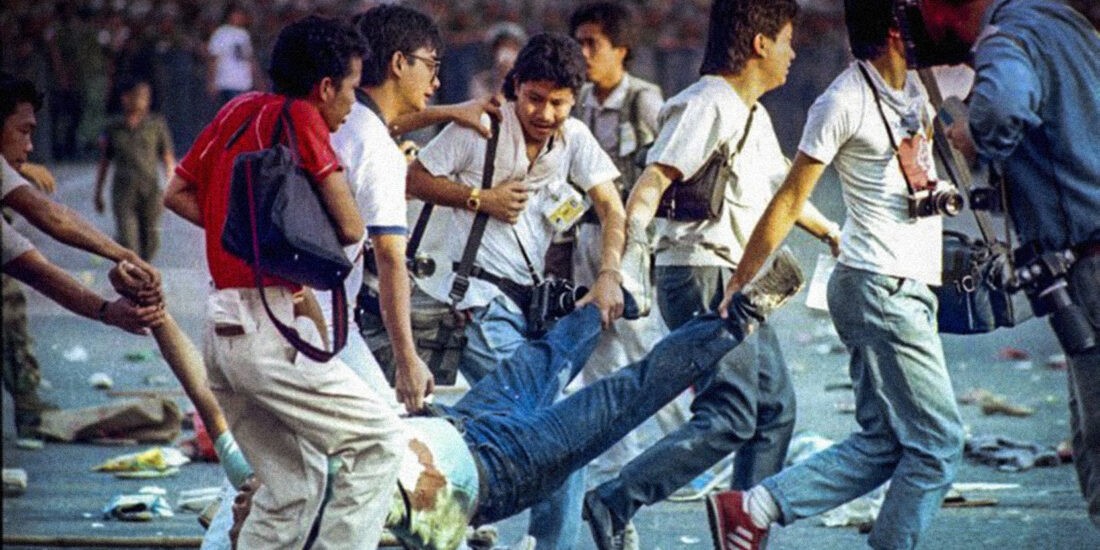The never-ending revolutionary narrative inside the cycle of injustice explored in Wild’s 1988 documentary
One unchanged and sustained Filipino quality over the course of history is a revolutionary spirit, taking form as an ember of a fiery desire to spark change in a system that perpetuates deeply-ingrained injustices. However, there is more to it than what meets the eye. The documentary film “A Rustling of Leaves Inside the Philippine Revolution” by Nettie Wild introduces us to the grim yet vital realities of revolution, as it underscores three corners of a political triangle—the legal left, the armed struggle, and the adversary in the form of the armed right-wing.
Varied Lenses
One of the most commendable aspects of the film is how it is able to intertwine three different perspectives in an almost two-hour documentary. It showcases the communist party, the vigilante groups, and the military troops’ viewpoints in one frame. This might be one of the hardest things to conceptualize for a production, since a one-angle story already needs paramount brainwork, considering the research process and field toil, but a three-angle focus must have needed a pro’s skill, not to mention, immersive dedication. The scene seamlessly transitions from one point-of-view to another, which is its another notable aspect as it features three opposing positions without creating confusion. From start to finish, there is a solid establishment of narrative and capture of information, which their firsthand record of and immersion into the actual events corroborate. This must have been the riskiest part, but it was undoubtedly the most instrumental aspect to substantiate the whole content. On another note, although all of this is an interesting catch for the film, its most important and laudable feat is how it is able to fashion a more profound perception of revolution into the audience’s mind.
A Look into Yesterday’s Wounds
The title, per se, gives an intriguing impression of the film using a strong metaphor that will get one to wonder about the meaning behind it. It is an ingenious idea to associate the rustling leaves’ sound with the inside elements of a revolution that are similarly overlooked until given closer attention. It is easy to brand the communists as enemies, vigilantes as persecutors, and the military as the protectors, but digging deeper, how aware are we of where they are coming from? The film answers this question with a series of pertinent events that also mirror Filipinos’ decades-long fight to seek a heard voice.
“In the people’s need for land and desire to control their own lives lies a revolution.”
This is a powerful line to kick off the start while showcasing the common masses’ struggle in their undeveloped state. In the beginning, it already lays bare the inconspicuous scars of yesterday that uproot Filipinos’ outcry for justice. It features one of our history’s most remarkable movements, the People Power Revolution, held at EDSA in 1986, marked by the peaceful gathering of protesters to oust the then-dictator Ferdinand Marcos Sr. whose regime was known for killing thousands. Alas, the peaceful revolution, in retrospect, is not entirely peaceful as blood oversplit to water the fields that the people marched on.
It then builds a story of deeper cuts by unfolding Filipinos’ once-rekindled hope for a more civil and weapon-free government with the election of the country’s first female president, Corazon C. Aquino, who joined people’s forces against the two-decade dictatorship of Marcos. However, this hope vanished into thin air when the Mendiola Massacre happened under her watch, where bullets had been fired against protesters, who were only demanding effective reforms on land distribution for peasants. Accounts detail that even after years of Aquino’s presidency, the Comprehensive Agrarian Reform Program (CARP) that she rolled out to pacify mass pressure continued to frustrate farmers and land activists due to legal bureaucracies with landowners and hectare share with the landlords that left some peasants still landless. To date, no less than a hundred have been killed in agrarian activism.
The documentary is laudable for highlighting a plot twist no one saw coming: the regime Filipinos thought would be the exact opposite of the ousted one, would turn out to share a similarity later on. It was not long enough when the Aquino administration employed a military solution to counter the opposition. The struggle for our dissenting folks continued for the most part.

Film still from “A Rustling of Leaves Inside the Philippine Revolution” – A mirror to Filipinos’ ceaseless fight
Key Takeaways
The film opens our eyes to the ever-existing challenges that up to the present still exist. It incites a realization of why Filipinos’ revolutionary spirit stays unextinguished, which is because there are deep-seated wounds that remain unaddressed.
People’s clamor for equality is rooted in a deep desire to change the tides for the children of tomorrow. It is no one’s dream to continuously witness a community crumbling because of land deprivation. It is no one’s dream to constantly see a loved one hopelessly dying because of hunger and poverty. It is no one’s dream to incessantly succumb to an unlawful act because of society’s blind treatment of their inherent rights. These are the things nobody hopes to bequeath to the future line of people who will stem from their failure to fight for what they rightfully deserve and a future that their descendants could cherish. Hence, some resolute individuals idealistically act on the systemic problems by instigating a revolution as mere dialogues are hard to obtain.
It is unfortunate that we dream of a revolution that does not need to be met with violence and an ounce of bloodshed. The People Power Revolution became one for the books as it served as a testament that a conduct of change is a possibility, but still, it came with an accumulated human rights violations. Redefining a peaceful revolution in a different era might mean people and the government selflessly acting together in pursuing a nation’s growth. However, given the culture of impunity and savagery exercised by the former and current administrations, this is far from reality. This is why it is our obligation as Filipinos to continue challenging the status quo; to pressure the people in power to provide efficient solutions, so that the masses’ struggle does not need to resort to guns and rifles anymore.
Remember, there is no solved social issue out of persecuting a “Juan Dela Cruz” and flooding the ground with blood. It only exacerbates the already existing systemic flaws and social dilemmas in our country. We need a listening government and not an executing one, but nothing changes when we do not step up. It is our duty to raise our voice and be a voice for the less-heeded people—those on the fringes of society. We must fight together. From whatever social class we belong to, abuse of power will collectively cripple us. If we do not learn to speak up, we give more prerogative for the leaders to weaponize their authority against people whom they are bound to serve.
Words are powerful, and we should have them audibly resonate through our synergistic efforts to demand change. Silence as an option is dire ignorance, and ignorance is tantamount to a state of inaction. Inaction that tolerates the absence of a solution is just another form of oppression.





